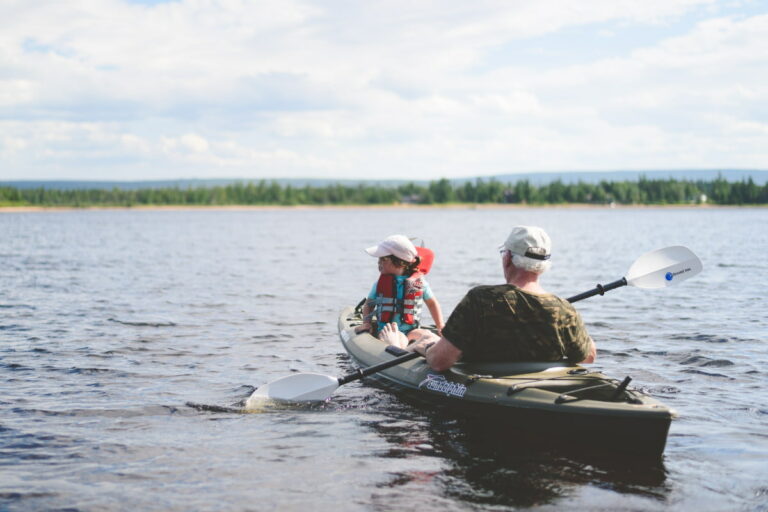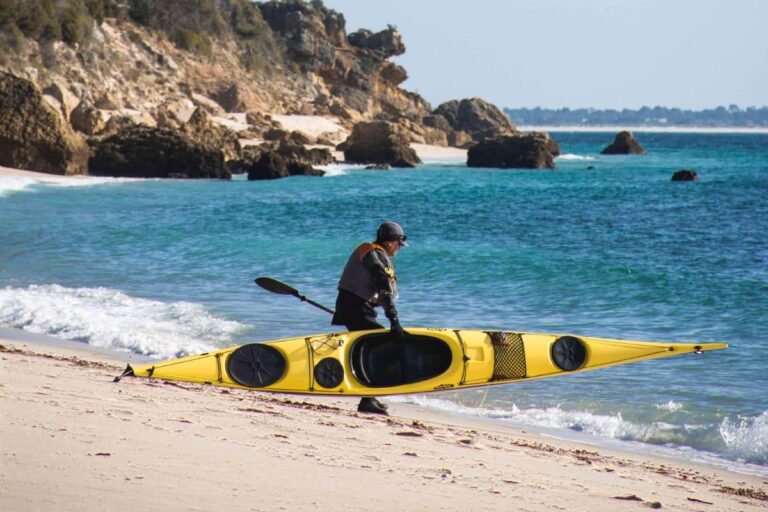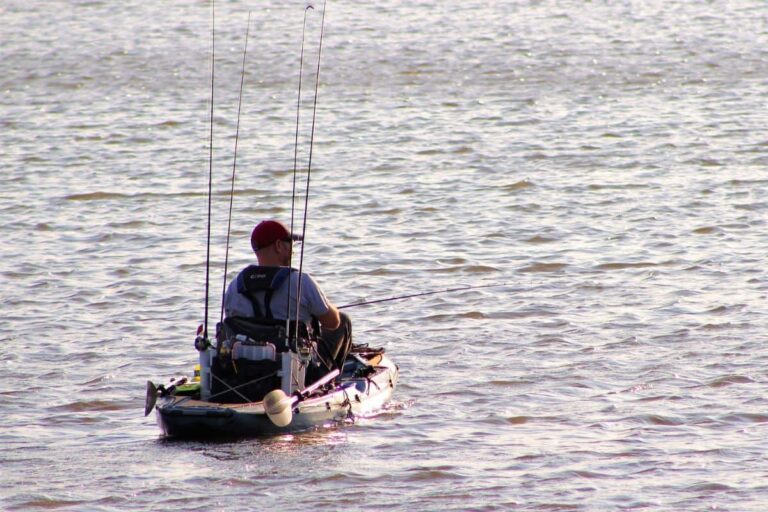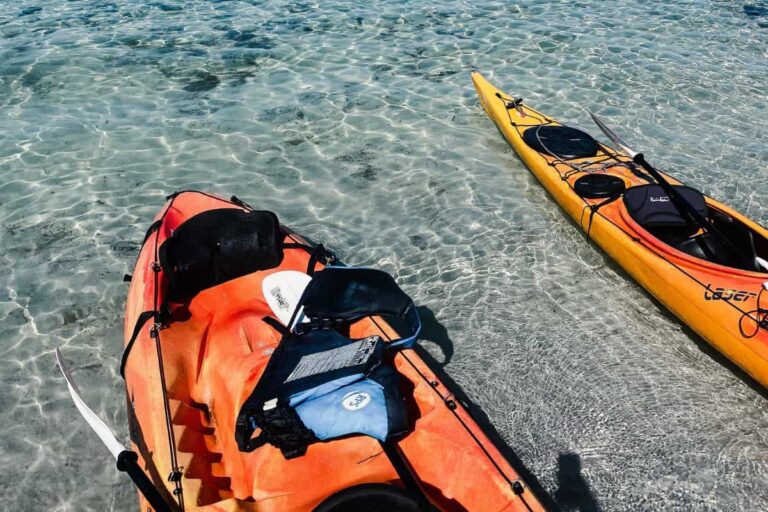How To Store A Kayak? (The Correct Way)
Taking a kayak out on the water is a lot of fun, but it’s also important to take proper care of your kayak in order to prolong its longevity.
Kayaks can become damaged if they’re stored improperly, so it’s important to have a rack, straps, or hoists to store your kayak properly indoors. Indoor kayak storage indoors is generally better than outdoor storage, but there are ways to cover and conceal your kayak properly outdoors if you don’t have adequate indoor storage space.
This article will help you find the right kayak storage solution for your boat so you can avoid theft or damage due to lack of proper storage.
Cleaning Your Kayak
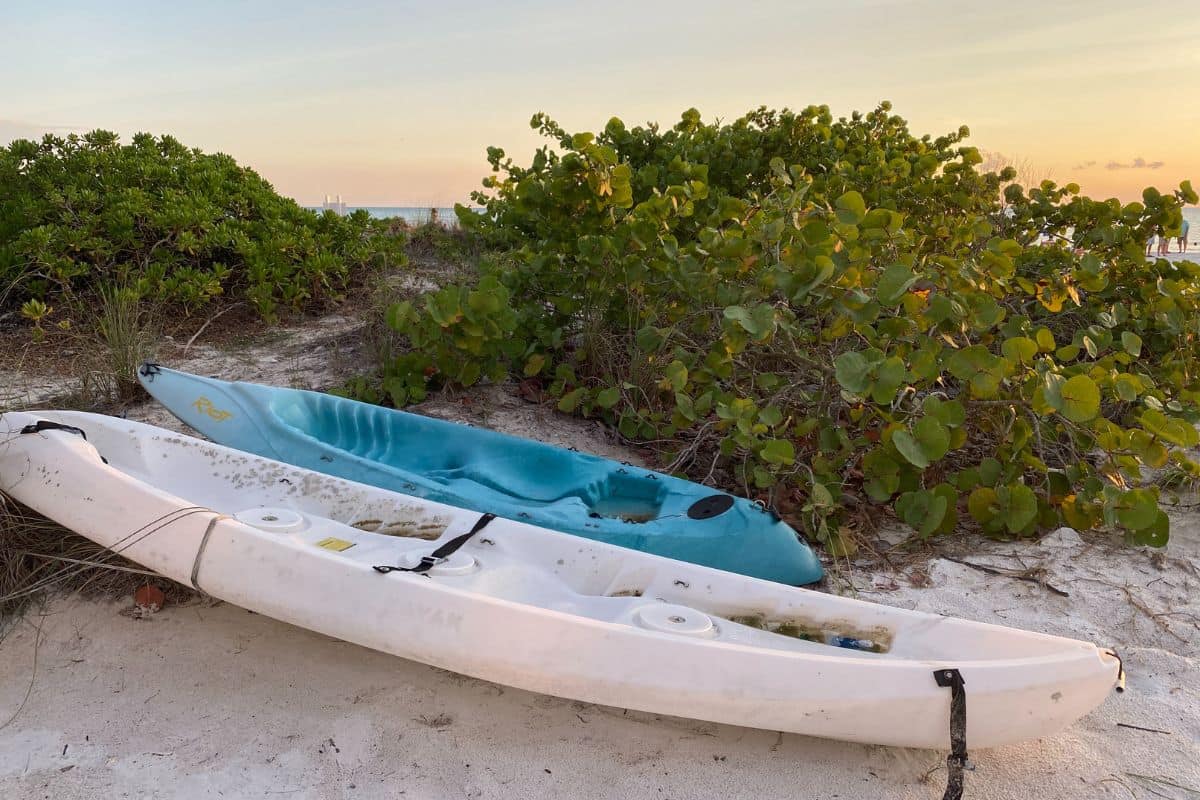
Kayaks need to be cleaned after every outing, and they should also be more thoroughly cleaned before putting them away in long-term storage.
If you’re just putting your kayak away temporarily, you can just rinse it off with water, making sure to rinse out your bilge pump as well.
If you’re storing your kayak long-term (such as over the winter), you’ll need to clean it more thoroughly.
Short-Term Kayak Storage
The way you prepare your kayak for short-term storage depends on your living space and which storage solution works best for you.
Some people store their kayaks the same way for both temporary and long-term storage, because they just keep their boats in their garage at all times.
Make sure your kayak isn’t easy to steal, and not exposed out in the open.
If possible, try to find an indoor storage option, and/or keep it covered with a tarp.
Also, don’t store your kayak on its side, even for a short period of time, as doing so will cause uneven weight distribution on the pressure points, and will damage your kayak and shorten its lifespan.
Some tips for short-term kayak storage:
- Consider using a ceiling-mounted kayak rack.
- Place your kayak in an upright vertical position on a PVC vertical storage frame.
- Store your kayak upside-down to protect it from damage.
- If you must store your kayak outdoors, keep it covered under a tarp or kayak cover, and away from water sources, to keep it dry and safe from the elements.
- Even if you store your kayak in the shade, apply a coat of protective spray to guard against UV rays, and keep it out of direct sunlight at all times.
- One of the simplest ways to store your kayak is with pool noodles – just rest the kayak on top of a few noodles, and throw a storage cover over it.
*Keep in mind, this is not a good solution for long-term storage, since pool noodles will decompress and your kayak will eventually end up sitting on the hard surface beneath them.
- If you don’t keep your kayak clean, it can disintegrate over time.
- Dirt, grime, sand, and salt can all cause damage and stains that gradually destroy your kayak.
- Avoid letting your kayak be exposed to direct sunlight, which can discolor the kayak’s paint and cause damage over time.
- Trapping moisture with your kayak can cause mold to grow on the kayak, which will weaken your boat.
- Freezing temperatures and ice can destroy your kayak, especially for those made from synthetic materials (such as plastic), because a constant cycle of heating and thawing will weaken and deteriorate the kayak material.
- Avoid storing multiple kayaks on top of each other, as this puts pressure on the floor of your kayak and deforms the shape of the kayak’s hull over time.
- This can also happen if you hang your kayak upright from the ceiling, because the direct gravitational pull can deform the kayak’s shape.
- You’ll also want to avoid laying your kayak directly on a hard flat surface or hanging it from the grab loops at the stern and bow.
- Mice, rats, and other pests love kayaks, since they make great nests.
- Your kayak’s seat cushions offer excellent nest material, and animals can easily chew through the hard plastic, which will cause extensive hull damage.
- Even though you’ll need to strap your kayak down tightly for transport, avoid strapping it down too tightly during storage or you’ll risk deforming your boat.
Long-Term Kayak Storage
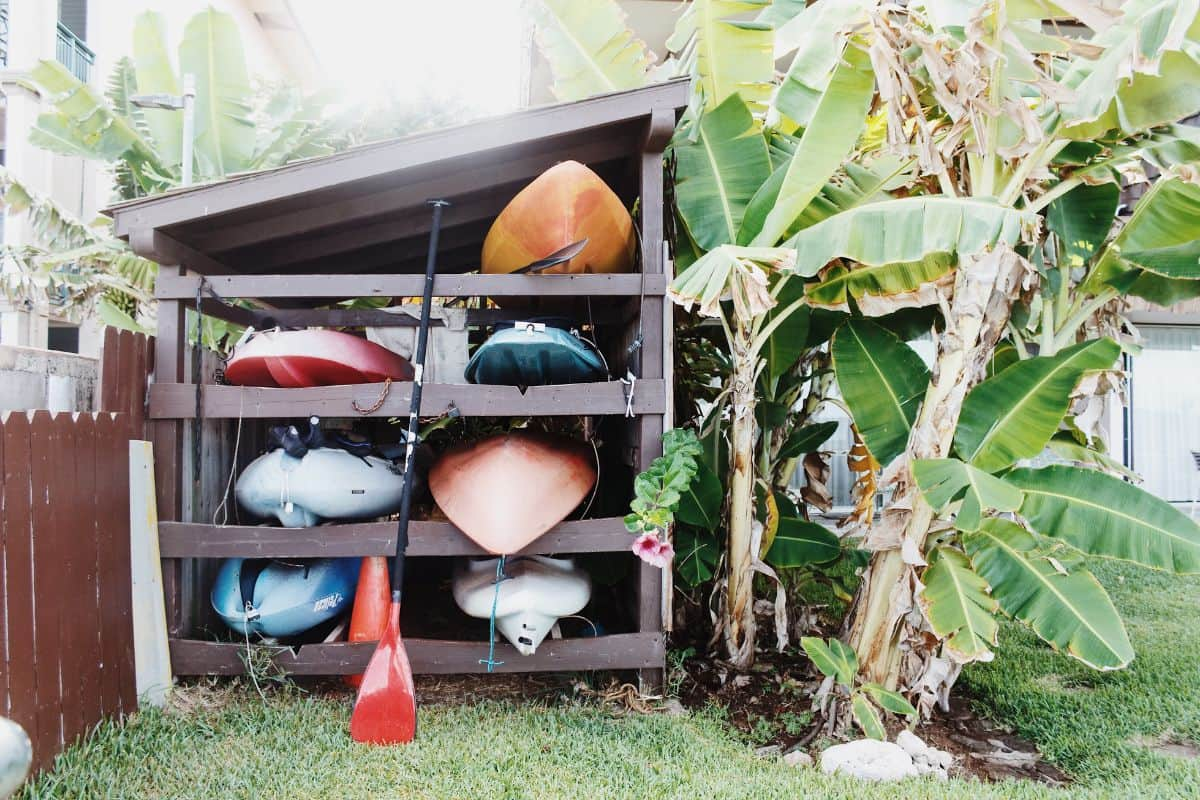
When storing your kayak for an extended period of time, the ideal location is indoors on a kayak storage rack.
This is because this method will protect the kayak from deteriorating under the elements, and it’s less likely for your kayak to be stolen.
If you can make room in your garage, storage area, or spare room, storing your kayak indoors is preferred.
A popular option for many kayak owners is to invest in an inflatable kayak.
A quality, modern inflatable kayak is more durable than a hard-shelled kayak, and can be compressed to fit in a container for easy storage.
Inflatable kayaks are popular options because they save space and are easy to transport and store without sacrificing quality.
The best and most space-efficient way to store your kayak indoors is to use a wall-mounted kayak rack – you can buy one, or build your own DIY rack.
A wall-mounted rack allows you to safely store your kayak while maximizing your available floor space.
It will also give you an interesting conversation piece for anyone who comes into the room and sees your boat.
You may choose to store your kayak on a flat surface on the ground, as long as you lay the kayak on two planks of wood, leaning towards its side.
Doing this keeps your kayak safe and preserves the hull’s shape by resting it on its most reinforced side.
If your ceilings are high and you don’t have an ideal storage location, you may want to consider overhead storage.
A combination of overhead pulley systems, padded cradles, and wide nylon straps can make for a great prolonged storage option.
Just take some time to make sure your overhead racks are secure, because if your kayak falls it is likely to be significantly damaged.
Long-Term Outdoor Kayak Storage
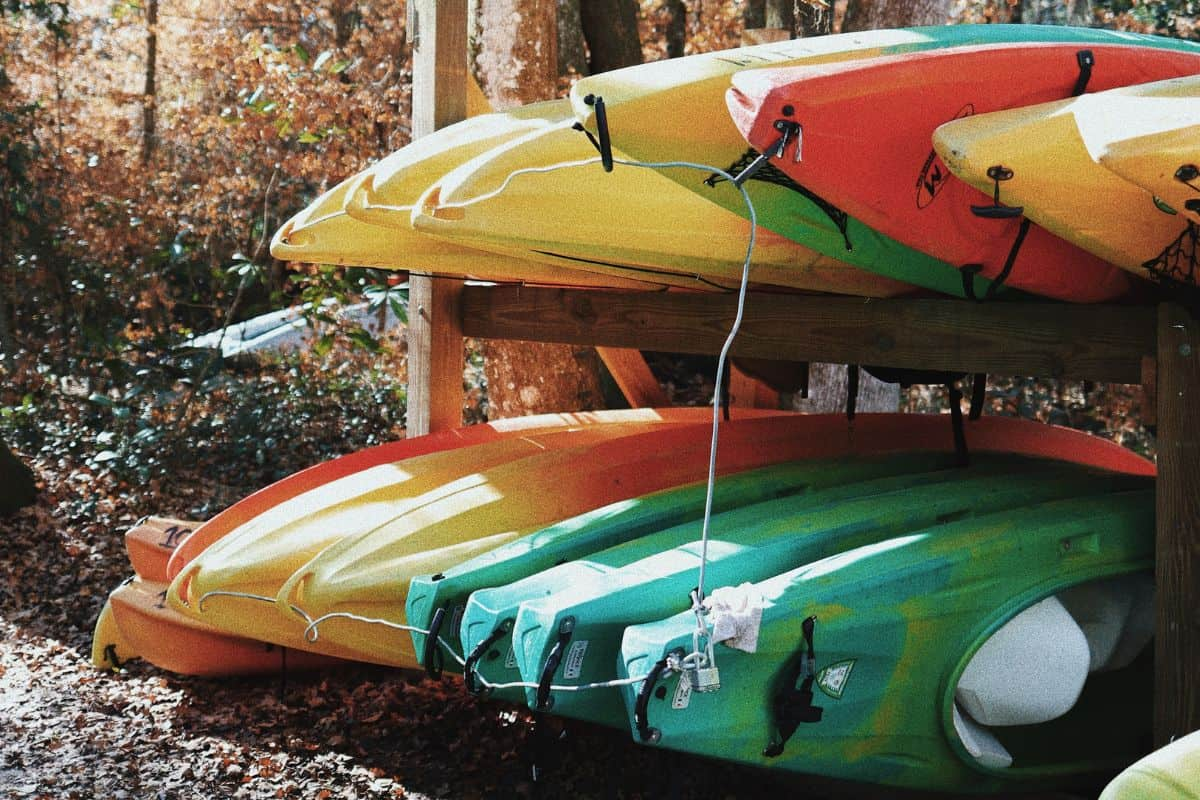
Storing your kayak outdoors for an extended period of time isn’t optimal, but it might be your only option, depending on your circumstances.
If you’re in a situation where you have to store your kayak outside long term, here are some important tips to keep in mind:
- Extended exposure to the sun’s UV light rays will destroy, damage, and disintegrate your kayak over time, so keep your kayak under some sort of shelter, like a covered porch or even a tarp.
- Wrapping a tarp around the kayak will trap moisture inside which can create mold, attract critters and pests, while also making your kayak gross and unpleasant to use.
- Instead, it’s wiser to suspend the tarp over the kayak properly, like a tent.
- Cover the cockpit and make sure the drain plug is properly inserted so that bugs and rodents don’t use your kayak as a home – if they can chew through drywall and hard brick, they can chew through your kayak.
- Just like with short-term kayak storage, consider giving your kayak a coat of UV sun protective spray to help keep your boat safe from extreme heat.
Kayak Theft
When storing your kayak, it’s also important to prevent it from being stolen.
Here are some ways to reduce the risk of theft:
- Keep your kayak out of plain, visible sight.
- Secure a lock (such as a steering wheel lock) to the grab loop or the cockpit.
- Even though these locks and the grab loop can be cut, you’ll still dramatically lower your risk of theft because your kayak will no longer be an easy target if it’s hidden and locked down.
Options For Indoor Kayak Storage
Whenever possible, indoor kayak storage is always best.
There are a variety of options for indoor storage, such as:
- Hanging racks: There are cradles that can be customized and mounted onto any wall, as long as it’s strong enough to hold a kayak’s weight.
- Hanging straps: These are similar to hanging racks, but it’s much harder to load the kayak into the hanging straps by yourself. It’s especially important to make sure that these straps are attached to a sturdy wall before you store a kayak in them.
- Free-standing racks: Professionally built, free-standing kayak racks come in a range of sizes that can accommodate a number of different kayaks. You can also build a free-standing kayak rack fairly easily with planks and/or PVC pipe – but keep in mind that this option is a permanent structure that takes up more space than other methods of kayak storage.
- Hoists: Hoists can be used to store your kayak using heavy straps and a pulley to lift the kayak up to the ceiling.
To ensure your personal safety when using this method, make sure that the hoist is strong enough to securely support your kayak.
Can kayaks be stored outside?
Yes, but it’s not optimal, especially for long-term storage.
If you do need to store your kayak outside, make sure you keep the kayak elevated off the ground, the cockpit covered, and the boat covered with some sort of tarp.
Can you store kayaks on the wall?
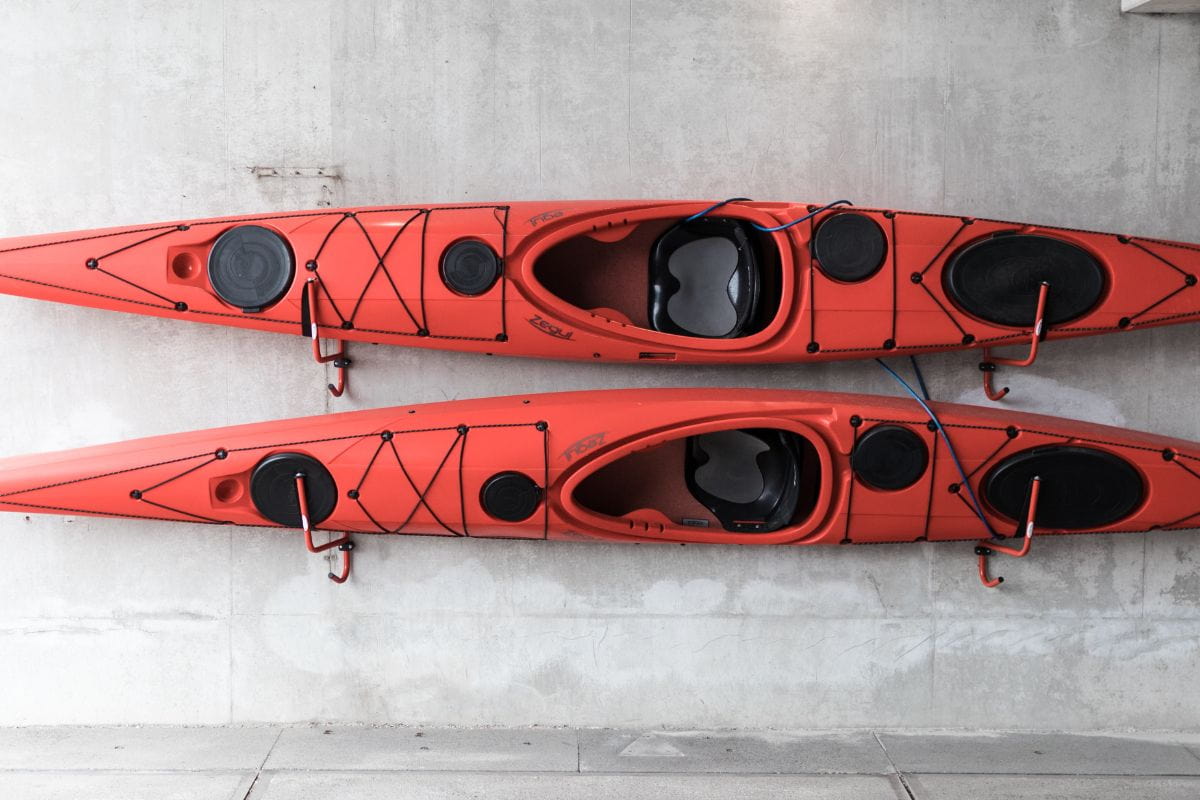
Yes, there are a number of ways to store a kayak on a wall, both indoors and outside.
The best ways to store kayaks on the wall are with wall-mounted racks or straps.
You can also install a hoist system to attach your kayak to the wall or ceiling – these methods also work well in most garages.
How can I store kayak if You can’t mess with the walls?
You can still store a kayak if you live in a place where you’re not allowed to do any projects that require you to drill into, paint, or otherwise mess with the walls.
In this case, the best option for long-term kayak storage is a free-standing rack, which you can buy or even make yourself.
Conclusion
Before planning any kind of kayaking trip, make sure you also take time to consider where your kayak will be stored when it’s not in use, especially when it comes to extended periods of time.
Table of Contents



